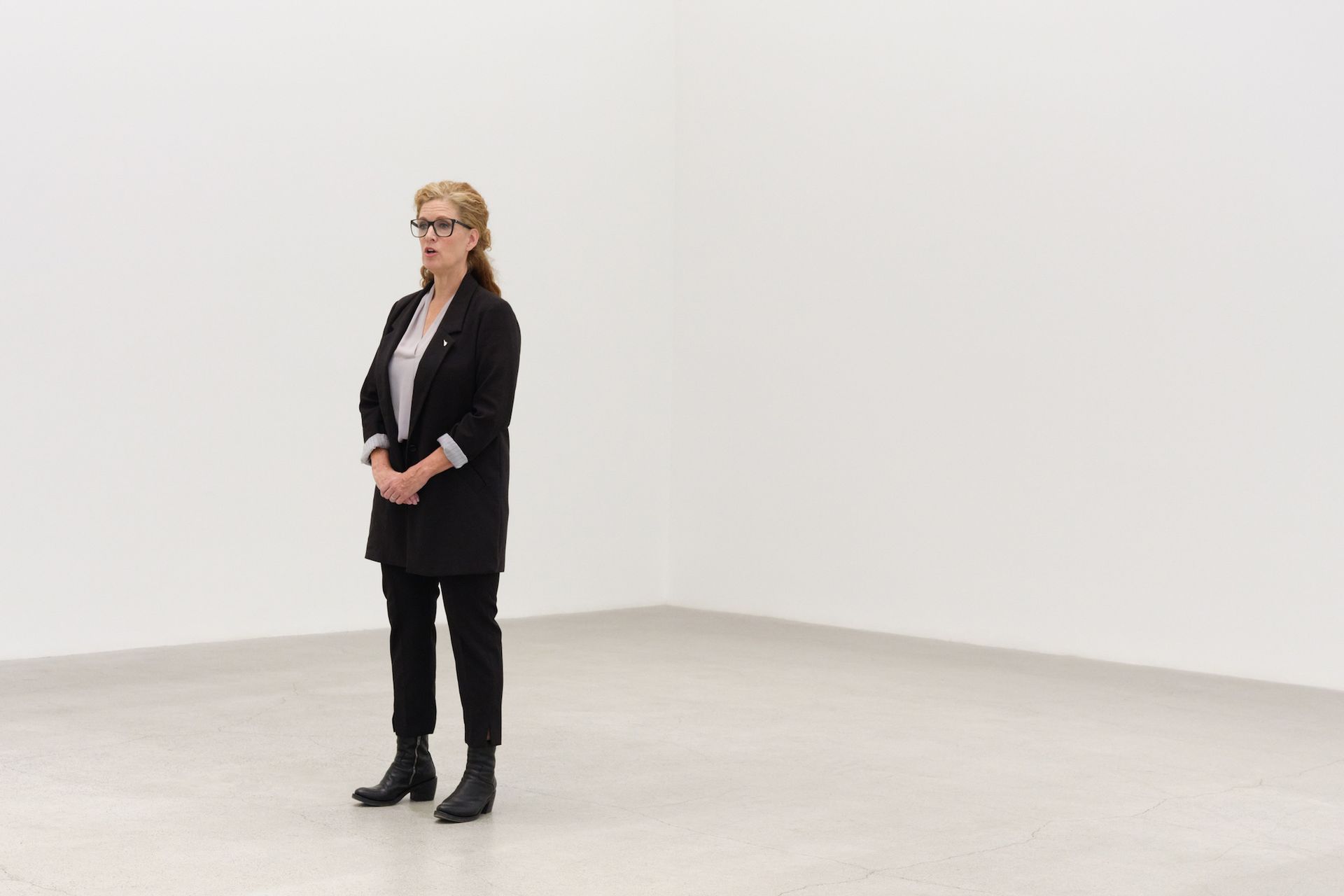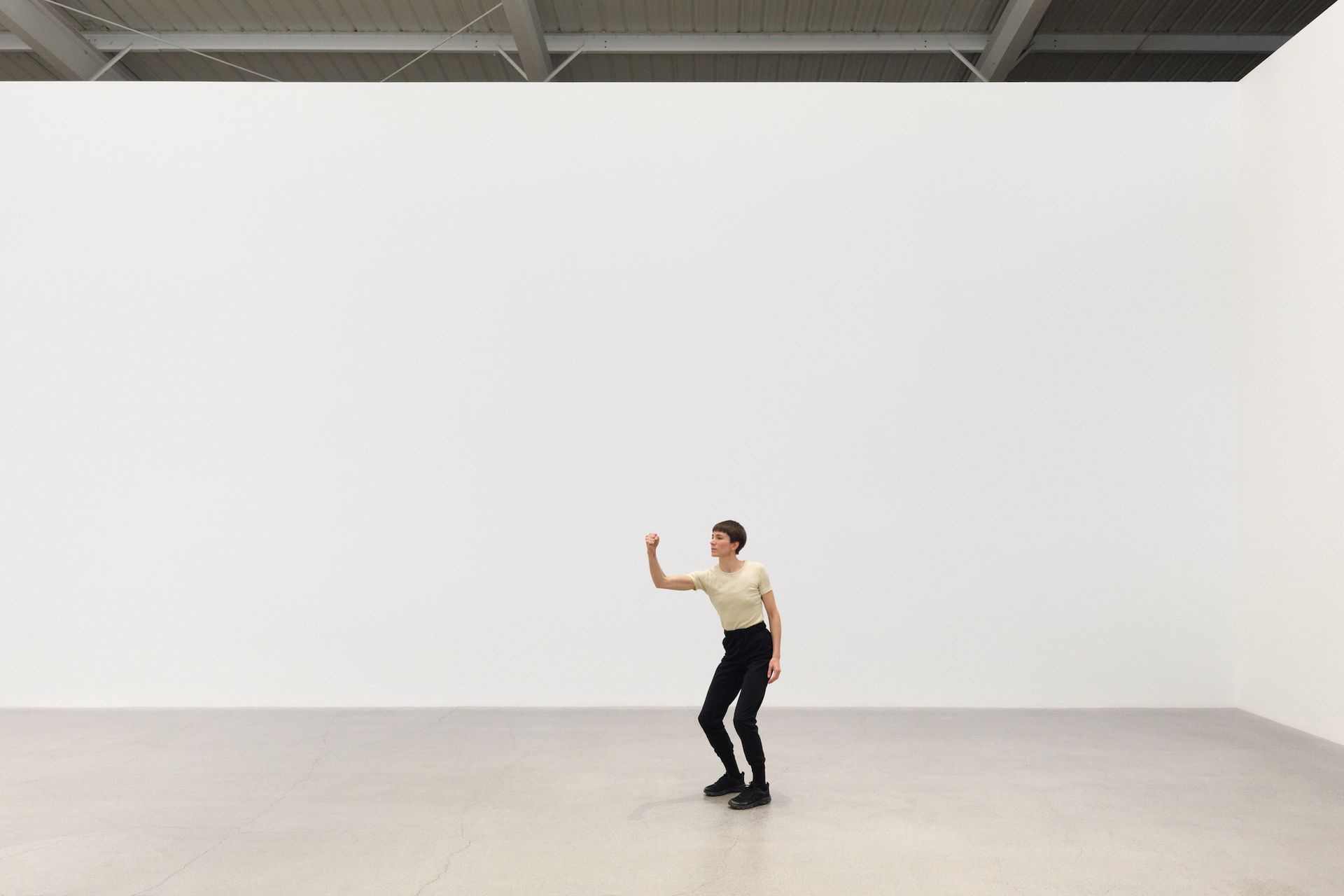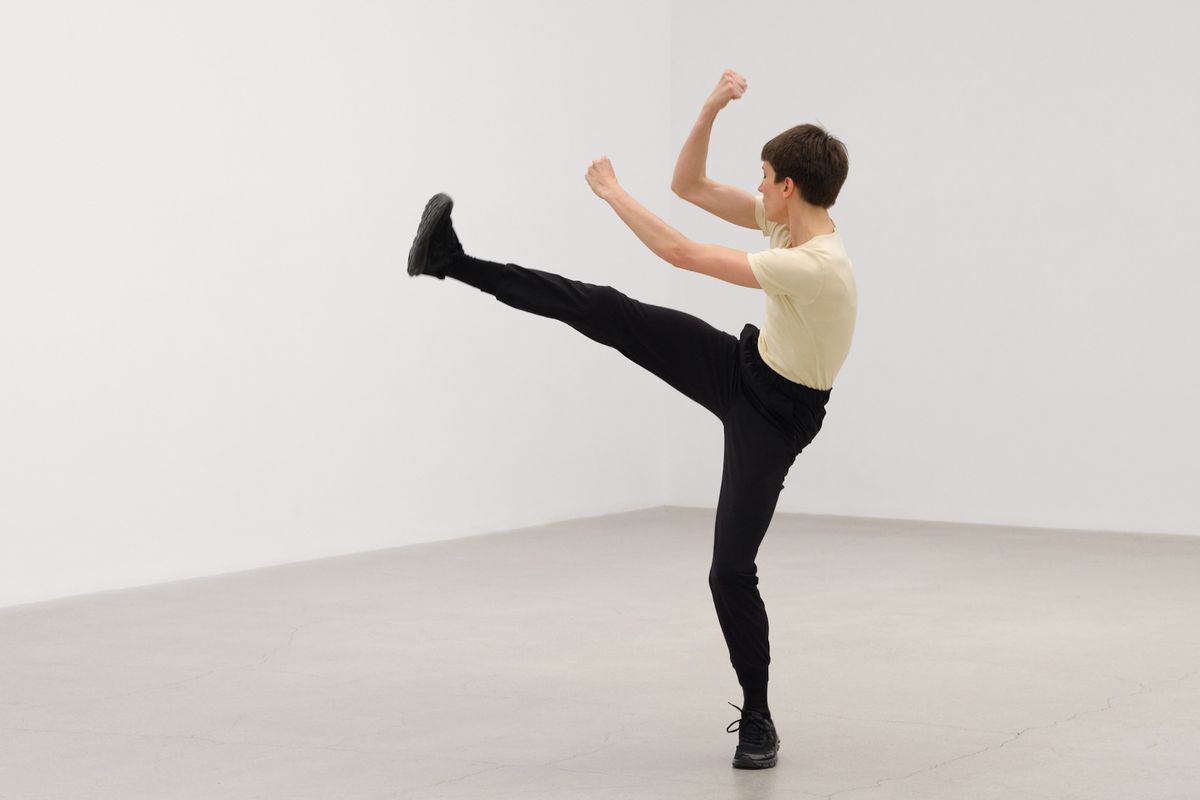In the stark white gallery at Catriona Jeffries in Vancouver, built on the bones of an old marine metal factory, a crowd gathers to watch Speech! and Fight! (both 2022), a new two-part work by artist Janice Kerbel. First, Rachel Meyer appears, dancing through the space in a frenzy of panicked yet precise movements, choreographed by Kerbel in collaboration with Meyer through a series of graphic notations that evoke those of Merce Cunningham.
Then actor Colleen Wheeler delivers a speech, written by the artist. Playing with the speech as a typology, Kerbel references historical, Shakespearean, motivational, political and evangelical texts, but changes them so they are not overtly recognisable.
“I didn’t want the audience to stay with one particular phrase, but to feel the power of the words,” says the artist, who is British and based in London but was born in Toronto. She was shortlisted for the Turner Prize in 2015.
Certain phrases in the speech have a surprisingly moving resonance, in these times of bloodshedand plagues. “War is raging, hearts are broken, wealth flows in an avalanche of abundance,” Wheeler intones. “More than ever before destiny is not of our choosing.”

Janice Kerbel, Speech!, 2022, live performance Photo: Rachel Topham Photgraphy. Courtesy Catriona Jeffries, Vancouver
But just as one begins to feel a sense of narrative flow, it is deliberately interrupted by a nonsensical joke that feels less like a pandemic pep talk and more like Lewis Carroll. Lines reminiscent of speeches by Winston Churchill and mentions of “truth” and “facts” evoke our post-Trumpian (is it Trumpian or post Trumpian?) era, merging with toasts from weddings and funeral eulogies to create something that approaches a spoken tapestry of our current human condition.
The effect is rather like the Tower of Babel designed by artificial intelligence, yet rooted in an emotional truth that taps into the collective unconscious. The work evokes the zeitgeist of a time when we are digitally distracted yet desperate for meaning—when language is manipulated and controlled, and authentic content can be elusive.
“At first I thought I’d sit down and write a speech that was a composite,” Kerbel says, “but I wanted it to be less personal—as if there were a speech that was a composite of all speeches.” The result is something both contemporaneous and ahistorical, oddly personal yet universal.
Kerbel has worked with voice before—including in DOUG (2014), an opera of nine songs for six voices—and with movement in 2018’s Sink—a routine for 24 synchronized swimmers performed at the Western Baths Club in Glasgow. This is the first time she has combined both forms in one work, and to great effect.
Kerbel, who studied at Goldsmiths, says she has no background in performance, but her interest in it “came out of working with static objects that suggest performativity”. She adds, “At one point I thought, ‘If I’m already referring to performance why don’t I just do it.’”

Janice Kerbel, Fight!, 2022, live performance Photo: Rachel Topham Photgraphy. Courtesy Catriona Jeffries, Vancouver
Speech!Fight! was fine-tuned during a 2020 residency at the Amant Foundation in Italy and was “part of a long process” Kerbel says. She made a series of prior prints where “I wrote a fight for a number of people and all the actions are placed on a long sheet—a graphic score”. But the piece was “trapped in its form” and rendered “unperformable”, she says, akin to how her 1999 work Plans to Rob a Bank became unusable after it was revealed. Instead, the graphic fight score became a work in its own right, taking the form of eight prints shown in the 2018 Liverpool Biennial.
Another fight the artist originally choreographed for 11 people was “compressed into one body” in Fight!, Kerbel says, with Meyer “doing everything at once”. “We’re looking everywhere for some kind of way to communicate or speak,” she says. “I’m always trying to strip narrative away—and then put it back.”
Speech!Fight! is a kind of meta-narrative; an urgent device to recover meaning in a dangerous time.
- The final performance of Janice Kerbel’s Speech! Fight! is 25 June at 2pm at Catriona Jeffries, Vancouver.


